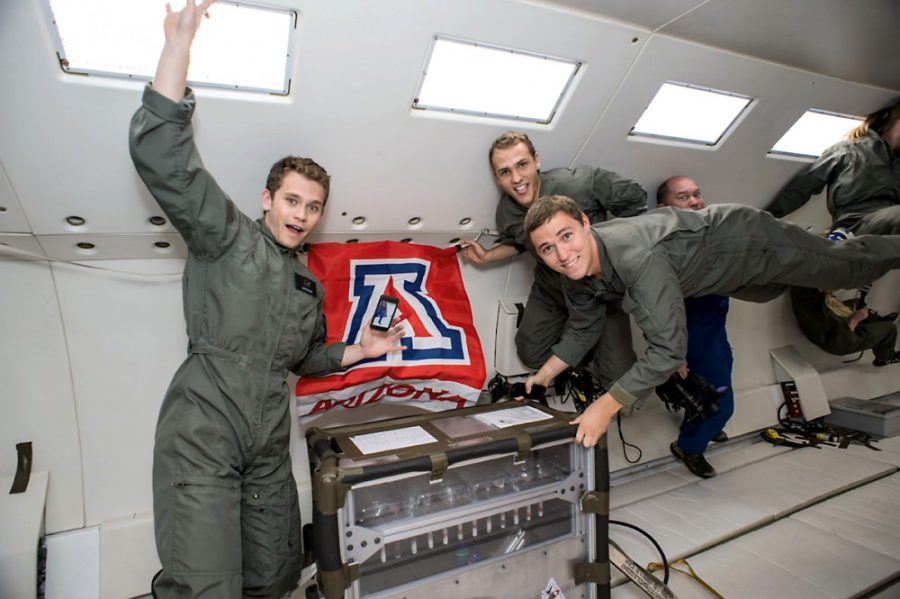A UA research team conducted an experiment it designed with NASA during the first week of June.
The microgravity research team was one of 18 teams to participate in NASA’s highly competitive Reduced Gravity Student Flight Opportunities Program. The team was looking into the polymerization process in a zero gravity environment.
Ruben Adkins, an aerospace engineering senior, said the team focused its research on the materials production in orbit because this is the direction technology is headed. Adkins also said this is a topic that has not been explored.
Over the course of seven months, the team designed and built an apparatus that would allow a reaction in microgravity. They flew in one of NASA’s planes, the Weightless Wonder, and were able to test their apparatus in microgravity, Adkins said. Being in zero gravity is not something many people get to experience.
“It was a blessing that we were able to be a part of the program,” Adkins said.
In addition to the research aspect of this program, the team also had the opportunity to network with undergraduate students from other schools, Adkins said.
Justin Hacnik, a molecular and cellular biology senior, said the team began with a written proposal for the project last August. He said one of the criteria for this experiment was designing an apparatus that would allow liquid to remain stationary in microgravity. Their apparatus also had to have three layers of separation for NASA safety standards, Hacnik said.
“The engineering process in general isn’t very static, [it’s] constantly changing and that was definitely a turn in our box design,” Hacnik said.
The team members came from diverse backgrounds with their field of study, Hacnik said. The members’ majors range from chemical engineering to mechanical engineering and aerospace engineering.
“When we were working on the project, we kind of wanted to find something all of us could contribute to,” Hacnik said.
Michael McCabe, a mechanical engineering senior, said there are no statistical results from their experiment yet. He will test the samples sometime next week and compare the control samples to the microgravity samples.
“Fun stuff aside, nothing we did on paper came out as planned,” McCabe said.
Chemical engineering senior Kellin Rumsey said if he were able to participate in this program again, he would be interested in doing more experiments in other environments, such as double gravity.
“Either way, we learned a lot … we were doing something that had never been done before,” Rumsey said.









